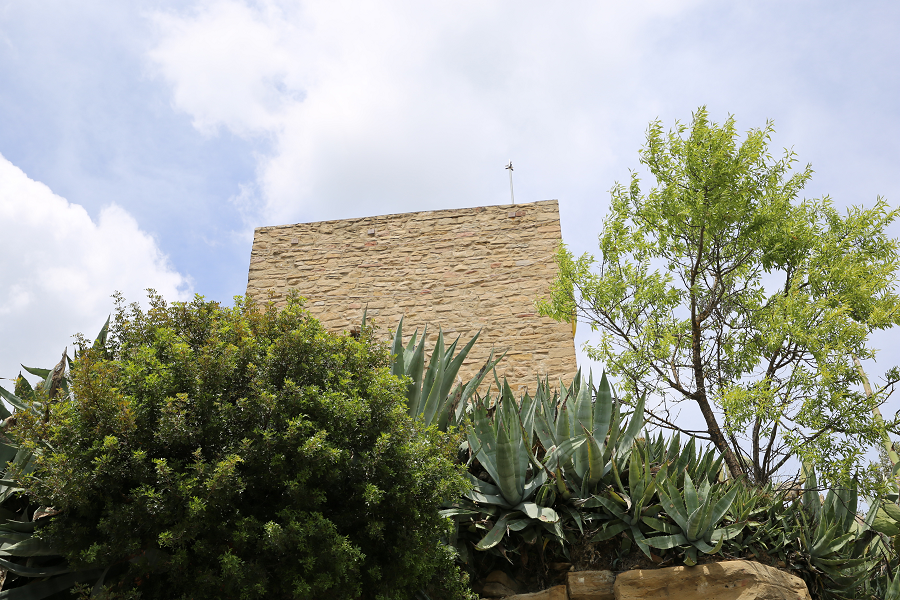The Castle of Sant Vicenç de Castellet (cat. El Castell de Sant Vicenç de Castellet) is a fortification in Sant Vicenç de Castellet (Bages), Barcelona province, Catalonia, Spain. Located right next to the tower is the church of Santa Maria de Castellet. Just below the hill there are the so-called “Russian Mountains” or “Terrers Blaus”, a set of small hills especially unique formed by margins of blue coloration. It is a work declared cultural asset of national interest.
The only elements that remains of the castle constructions are the tower, which rises on the south end of the hill, a part of the wall and remains of rooms. Taking into account the structure of the building, the openings (the door and windows) and the construction, it is believed that the tower was built at the end of the 13th century, after the destruction of 1277. The other remains could be older.
The only element that remains of the medieval complex of Castellet Castle is the tower and some fragments of wall on the south side. The tower is square with 90 cm thick walls and with a height of 9.7 m. It has three levels and the structure is made with heavy and large ashlars arranged in horizontal lines. The entrance door has a semicircular arch of remarkable proportions, opening to the east. It seems to be a 13th century building, even though the remains of the wall seem to be older.
History
The castle was built to defend a territory called Castellet de Bages that practically included the territory of the current Sant Vicenç de Castellet. In 1099 in the bull of Pope Urban II to Bishop Ot d’Urgell, Castellet is mentioned as property in Manresa except for the parochial jurisdiction of the bishop of Osona. The castle is documented in 1001 when the repopulation continued through the lands of the Bages. The place must have been taken by an important man who acquired the properties in allod and gave them to the Bishopric of Urgell. This distant property must have been difficult to control for the Bishops of Urgell, who after two centuries sold it to the Counts of Barcelona. The counts passed the castle in fief to a family called Castellet and we know that in 1277 the castle was destroyed and its lord murdered. The castle was raised again and of this second construction remains the tower.
The counts granted the castle in fief to a family called Castellet. Due to the various castles and families that held this name, it is not documented in a clear manner until 1277: Guillem de Castellet, who was murdered by the destruction of the castle, which was rebuilt and the family continued headed by Bertran de Castellet. In 1279 the castle was owned by Humbert de Rocafort, lord of Castellbell married to Sibil•la de Castellet. The family continued with the dominion of the castle until the 16th century, introducing other surnames (the Cirera, the Segalers and later the Muntanyans) through marriage or adoption. In 1343 the Cirera family acquired from King Peter II the allodial and direct right that the king had. In the middle of the 16th century as the lord of Castellet appears Onofre de Cardona and through marriage it passed to the family of Amat de Terrassa who stayed the lords of the castle until the 19th century, when the lordship dependencies were abolished.
Coordinates: 41° 39′ 50″ N, 1° 51′ 03″ E












